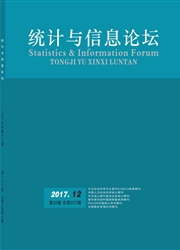

 中文摘要:
中文摘要:
视觉注意分配探讨个体如何选择性地注意外界信息。本文根据人类视觉系统的感知特点,提出一种定量描述视觉注意分配的方法。首先,模拟人类视觉感知机制,描述视线映射到界面上注视点的注意程度;然后,利用模糊核聚类算法计算注视点属于不同界面对象的程度,将注视点的注意程度和隶属度相结合构建两种视觉注意计算模型,分别为KFCM-A模型和KFCM-U模型;最后,设计相关眼动实验来验证视觉注意计算模型的有效性。实验结果表明:视觉注意计算模型能够较好地描述被试者个体的注意分配策略,且KFCM-U模型识别被试者搜索目标的准确率高达94.4%,较优于KFCM-A模型。
 英文摘要:
英文摘要:
Visual attention allocation investigates how individuals focus on external information selectively. Based on perceptual properties of the quantitative method that is applied to measure visual human visual system, in this paper we propose a attention allocation. This paper begins by simulating human visual attention systems based on their physiological structure and describing the degree of attention on eye fixation points as the same as the strength of eye-interface connection. Next, we use the kernelbased fuzzy clustering algorithm to calculate the degree of eye fixation points belonging to different components, and then combine the degree of attention and membership on eye fixation points to present two computational models of visual attention: KFCM-A model and KFCM-U model. Finally, the related eye-movement experiments are developed to verify the effectiveness of the visual attention computational model. The results of experiments indicate that the proposed models can describe subjects" attention allocation strategies explicitly. Besides, on the aspect of recognizing the subjects" searching targets, the accuracy of KFCM-U model is 94. 4%, which is better than that of KFCM-A model.
 同期刊论文项目
同期刊论文项目
 同项目期刊论文
同项目期刊论文
 期刊信息
期刊信息
